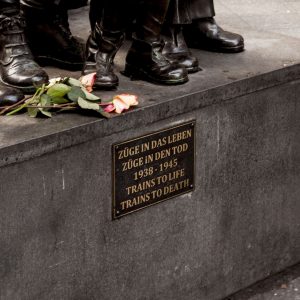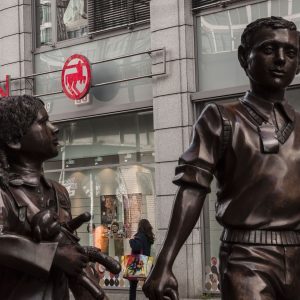After Kristallnacht on 9th November 1938, thousands of Jews tried to flee Germany, Austria, and Czechoslovakia. As Nazis destroyed Jewish synagogues, business, and homes, those who could leave, left. However, few countries in Europe would allow penniless Jewish refugees to seek asylum.
Kindertransport was a unique operation. Around 10,000 unaccompanied children aged between 3 months and 17 years old entered the United Kingdom on block visas.
Organisations raised funds, found guarantors and foster families, and began to organise escapes. Jewish and Christian organisations aided the groups of children leaving Europe. Christian groups included Quakers and Methodists as part of the London-based Refugee Children’s Movement.
Trains took the frightened children across Europe. Most of them would never see their parents or families again. They waved goodbye at train stations, clutching only a few precious belongings.
Of the 6,000,000 Jews murdered by the Nazis, about 1,500,000 were children. Those who left family behind to escape on the Kindertransport were the lucky ones.
In December 1938, 206 Kindertransport children arrived by boat from Hook of Holland to Harwich. Many of them were orphans and some had parents already in concentration camps. On arrival, authorities sent them to an unoccupied holiday camp at Dovercourt, Lowestoft. More and more children would follow until the borders shut with the outbreak of World War Two in September 1939.
Some of the children would stay with relatives in the United Kingdom. Others would come to make their homes with foster families, in boarding schools, or hotels across the country. A small group made their way to somewhere they would not have known, Ballyrolly House, Millisle, Co. Down on the Ards Peninsula of Northern Ireland. Others in Northern Ireland briefly settled in the Home for the Aid of Jewish Refugees, Cliftonpark Avenue, Belfast, Co. Antrim.



